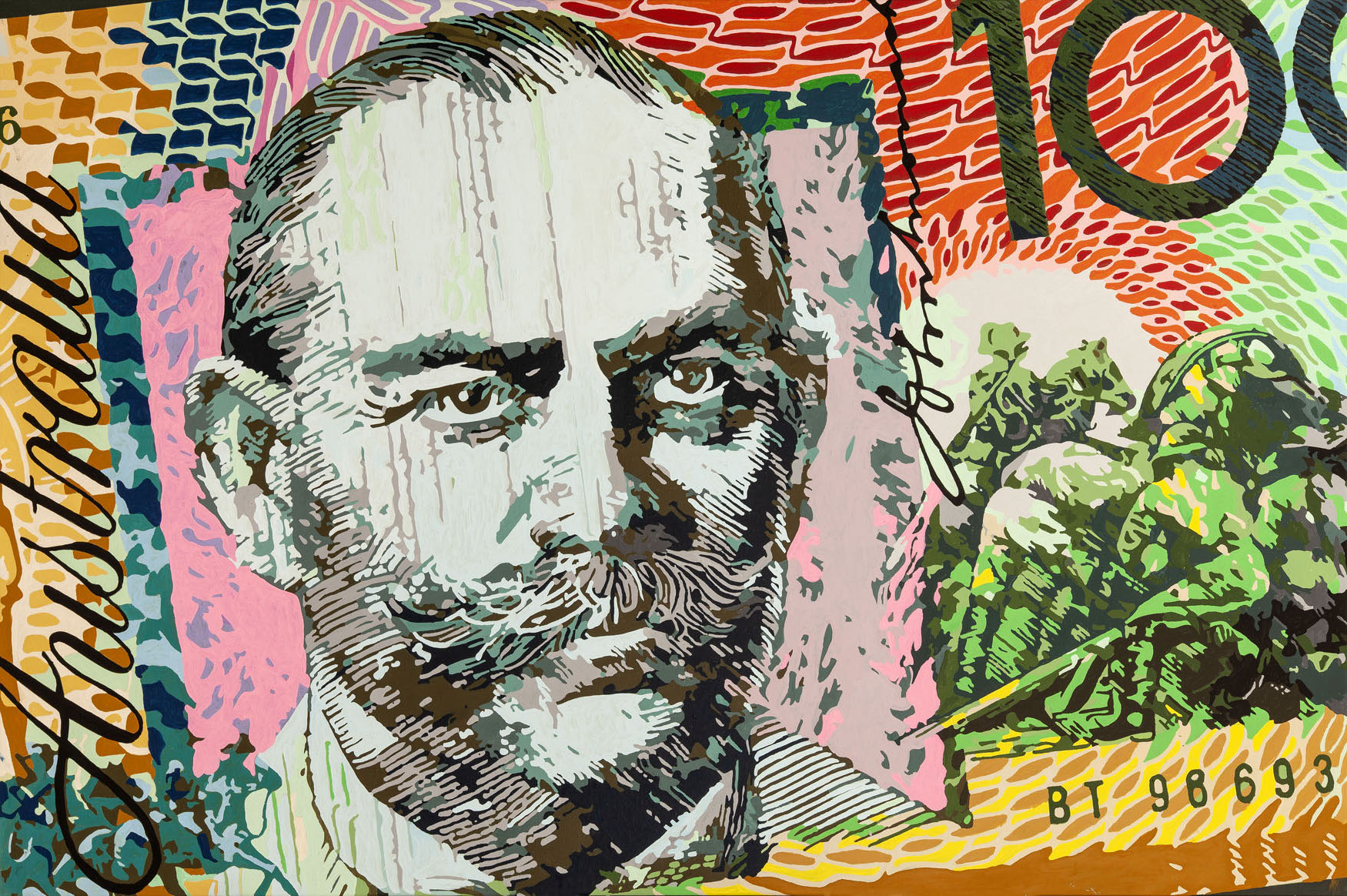Sir John Monash GCMG, KCB, VD
Sir John Monash (1865-1931) was an outstanding Australian soldier, engineer, and administrator.
On June 27, 1865, John Monash was born at West Melbourne, Victoria, the only son of Louis Monash and his wife Berthe, née Manasse, Jewish migrants from East Prussia (Poland). John attended Scotch College, Melbourne, of which he was equal dux (equalled the highest marks made by others in his courses) and won the mathematics exhibition at the 1881 public examinations.
Monash formed a civil engineering partnership in 1894 with J. T. N. Anderson. They made only a precarious living until Monash began appearing in the courts as an advocate on engineering matters and later was employed as an adviser and negotiator by large contractors. The firm also built bridges. They lost all their capital, however, after an eccentric legal judgment in favor of a defaulting client, and until 1905 Monash remained deeply in debt. He was eventually saved by developing his local rights to the Monier patent for reinforced concrete construction. The companies for major building construction which he now formed and managed became highly profitable. By 1912 Monash was a well to do Melbourne businessman at the head of his profession, a radical president of the Victorian Institute of Engineers, a university councillor and a part-time lecturer.
From 1908 Monash was Victorian commandant of the Australian Intelligence Corps (militia). He became closely involved in staff work and educated himself further on all matters military. In 1913 and 1914 he commanded an infantry brigade as colonel. On the outbreak of World War I he was appointed to command the 4th Infantry Brigade, Australian Imperial Force. He was promoted to major general in command of the 3rd Australian Division, trained it in 1916, and led it ably in 1917 at Messines and in the battles leading up to Passchendaele. In early 1918 he led the division in combatting the German offensive. From May, as lieutenant-general, he was corps commander during the battle of Hamel and the succession of great victories from August 8, including Mont St. Quentin, until the breaking of the Hindenburg line.
He was articulate in explaining battle plans, with extraordinary attention to detail and provisions for avoiding unnecessary risks. His military achievement, given his background as a civilian Jew of Prussian origin, remains astounding. He has sometimes been spoken of as the outstanding Allied general. He was promoted to General in 1929.
After the war, Monash was chairman of the State Electricity Commission of Victoria with the task of harnessing brown coal for the use of industry, then one of the most important national tasks. He succeeded triumphantly, building an institution which for a long time was an outstandingly successful state instrumentality. He was the unchallenged spokesman for returned soldiers; in charge of the Special Constabulary Force during the police strike of 1923 and chairman of the subsequent royal commission; university vice chancellor from 1923; Jewish spokesman and an active Zionist. He brusquely dismissed requests around 1930 to lead a right-wing coup. Monash died on October 8, 1931. His funeral was the most largely attended Australia had known. In the 1920s Monash was unquestionably regarded as the greatest living Australian—a tall poppy who was never cut down. Essentially he was a most gifted administrator; a man of extraordinarily wide knowledge, experience, and scientific and cultural interests; devoted to public service; and eventually, nearly all ambitions achieved, a man who wore his distinction modestly.


